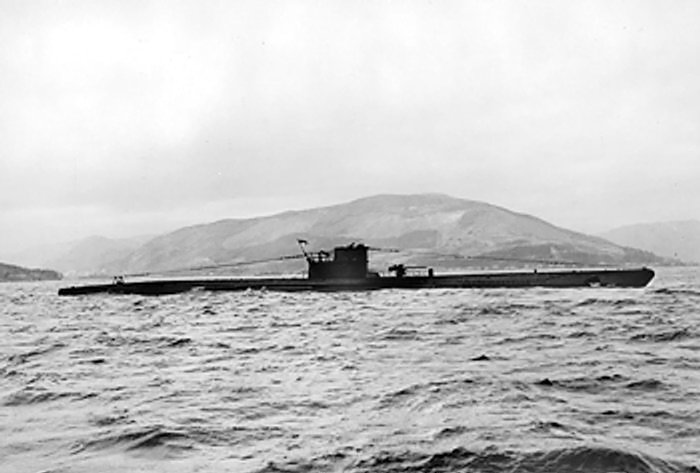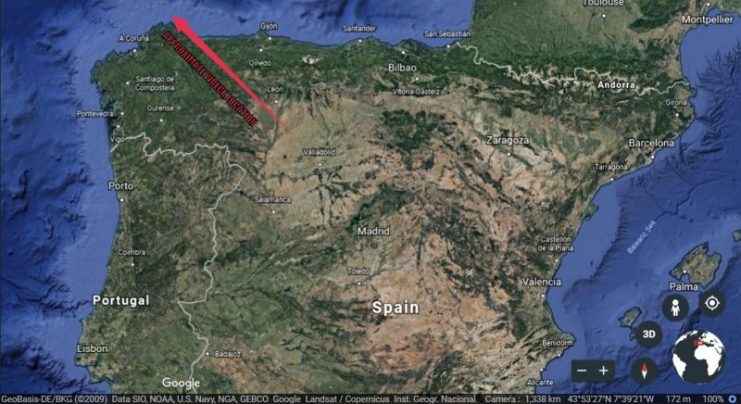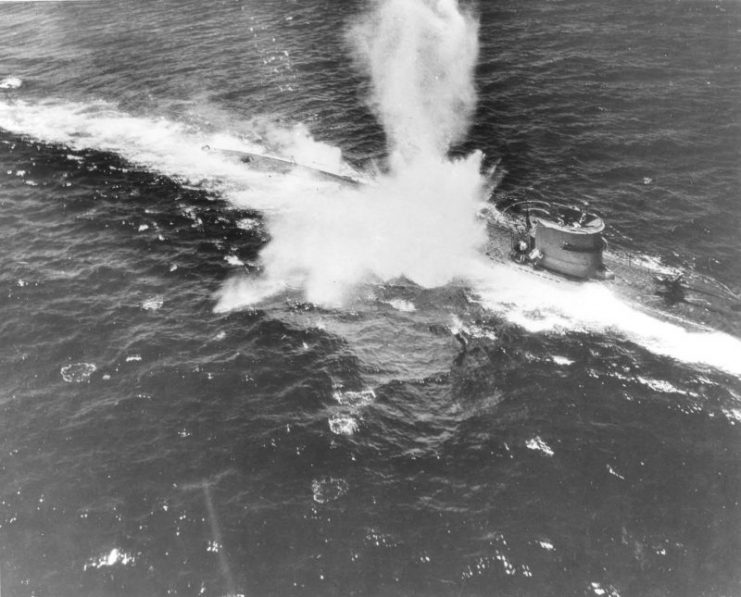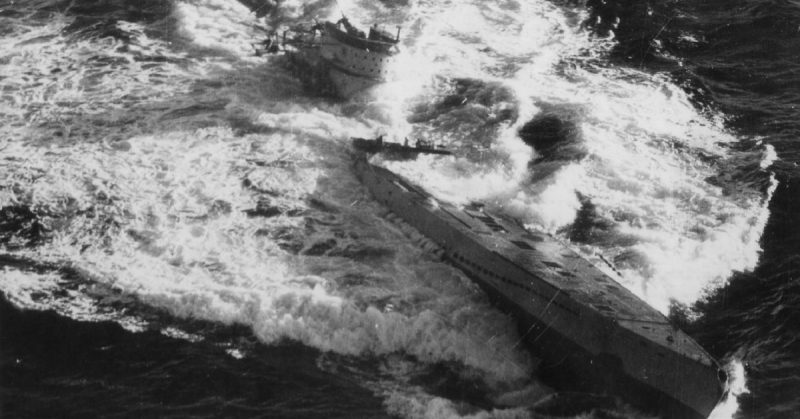For over 70 years, a German submarine, U-966 (nicknamed “Gut Holz”), has lain quietly under the sea off the coast of Galicia in the northwest of Spain. Now, her peaceful rest has been disturbed after three Spanish divers located and photographed the wreckage, lying in 75 to 85 feet of water in an area where the rough sea conditions often make diving very dangerous.
On the 10th November 1943, the submarine was scuttled by her crew after a day of fighting Allied planes. She was returning from a mission on the coast of the USA and was heading for safe harbor in Spain when she was sighted by Allied forces and was targeted by Liberator bombers from the US and Royal Air Forces and a Wellington bomber from the Royal Air Force.
They targeted her with depth charges while she zig-zagged over the ocean and fired back with her anti-aircraft gun. Reports indicate that she managed to shoot down one aircraft, a Catalina Flying boat from the Royal Air Force.

Struggling with severe damage from the depth charges, her crew decided that they would scuttle her rather than surrender her to the Allies. They laid timed charges and abandoned ship. Of the total crew of 52, eight men perished while the rest made it safely to shore. According to the U-Boat Archive website, local fishing boats rescued the crew as they were clinging to rocks offshore.
The Spanish were undecided on what to do with the survivors but on the 30th November 1943 legal opinion stated that the German submariners must be interned as they could not be classified as shipwrecked. They entered Spanish waters with no damage and defended themselves against the Allies.

Before the crew could be imprisoned, eight of the crew were secretly taken to Madrid from where they escaped into France on the 17th December 1943. Six wounded men were returned to Germany, and the remainder were taken to a detention center on the 21st December 1943.
In November 1944, the commander of the submarine, Lieutenant Eckehard Wolf, fled to Germany under an assumed name. The remaining crew remained in a prisoner of war camp until they were released in July 1945.
The three Spanish divers that discovered the U-966 are also interested in finding the Catalina flying boat that was reportedly shot down that day. They believe that the wreck of the plane must be located close by to where the U-966 was found.

The wreck has the status of being a war grave, so the divers have refused to reveal the exact location of the wreck. Naval historian Yago Abilleira, who is also one of the divers, told an interview that the wreck was located near Estaca de Bares and as the submarine was destroyed with charges the wreckage covers a large area. He explained that the sub had a rookie crew and was captained by an inexperienced captain.
U-Boats were highly successful and inflicted severe damage on the naval and civilian fleets during WWII. The U-966 was launched in January 1943 and sailed for ten months before being sunk. Gut Holz is a German bowling term and means ‘good wood’; therefore, the submarine’s emblem was a bowling pin and ball.
The wreckage of this submarine will again lie in peace on the seabed, and as it is a war grave, it cannot be tampered with in any way.
